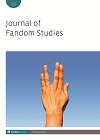
Full text loading...

Beginning as the Golden State Comic Book Convention in 1970, which drew in around 300 people, what has now become San Diego Comic-Con now sees an average of 130,000 attendees a year with an estimated annual economic impact on the region of $150 million. Not only has attendance grown substantially over that period, but the breadth and diversity of fan convention events have also undergone significant change. In this conceptual article, I will begin by drawing on recent approaches to the study of event within critical event studies, in combination with a Lacanian approach to the presence/absence dialectic, to conceptualize fan con events, and the forms of leisure articulated within them, as diverse forms of the narrating of absence. From that perspective, its attention will turn to the large scale, rapidly expanding, highly commercialized fan con events sector. Drawing on critical approaches to the study of leisure rooted in the work of Stebbins and Spracklen, the article will reflect on how these events have become instrumentalized evental spaces where the narrating of absence has become a key engine in the commodification and monetization of leisure.

Article metrics loading...

Full text loading...
References


Publication Date:
https://doi.org/10.1386/jfs_00008_1 Published content will be available immediately after check-out or when it is released in case of a pre-order. Please make sure to be logged in to see all available purchase options.